#marten de vos
Text
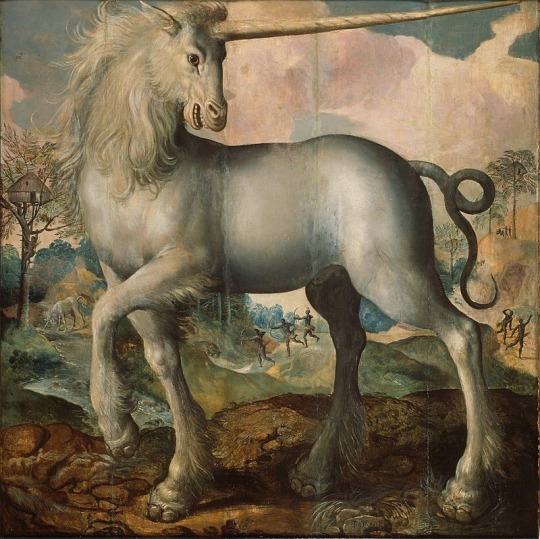
Unicorn / Licorne
1572
Artist : Maarten de Vos (1522-1603)
2K notes
·
View notes
Text

Maerten de Vos - The Resurrection of Christ (c. 1564)
83 notes
·
View notes
Text
06 Works, Today, May 10th is Saint Thais' day, With Footnotes - #131
06 Works, Today, May 10th is Saint Thais’ day, With Footnotes – #131
Jusepe de Ribera, (1591–1652)St. Thais (alternately, St. Mary Magdalen), c. 1641Oil on canvasHeight: 182 cm (71.6 in); Width: 149 cm (58.6 in)Prado Museum
José de Ribera (January 12, 1591 — September 2, 1652) was a Spanish Tenebrist painter and printmaker, better known as Jusepe de Ribera. He also was called Lo Spagnoletto (“the Little Spaniard”) by his contemporaries and early writers. Ribera…
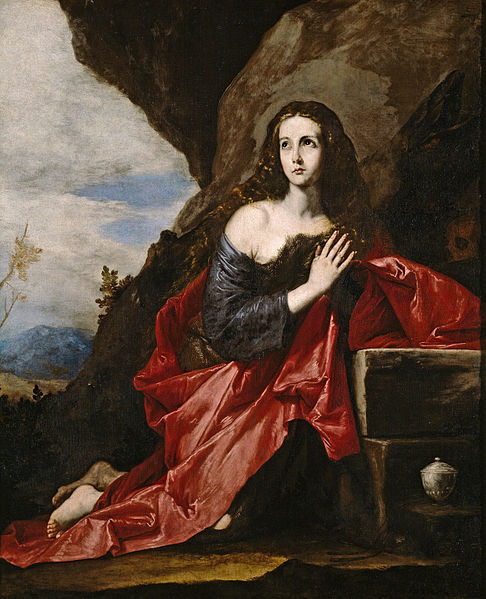
View On WordPress
#Ancient#Art#Biography#Charles-Antoine Coypel IV#Fine Art#footnotes#History#Jusepe de Ribera#Marten de Vos#mythology#Paintings#religion#Religious Art#St. Thais#Zaidan
2 notes
·
View notes
Video
2021 - Mexico City - 65 - Cathedral of San Buenaventura in Cuautitlán by Ted McGrath
Via Flickr:
The Nave of Cuautitlán St. Bonaventure Cathedral has a unique altar piece with art work and gilded framing. The altar 4 pieces and possibly 4 more on the nave walls are all or not works by Flemish artist Marten de Vos. Some research says there are 3 de Vos paintings here. Apparently only one is signed by de Vos, a 1581 panel depicting St. Michael the Archangel hanging here since the sixteenth century. I think its the one upper right side. Marten de Vos was one of the most prolific and influential painters and print designers in Antwerp in the second half of the sixteenth century. In Mexico there are 8 paintings that are attributed to the artist, the only signed being the one placed in the altarpiece of the Cathedral of San Buenaventura in Cuautitlán. De Vos did not cross the Atlantic to the Spanish colonies unlike some of his contemporaries but many prints and several paintings did make the voyage and had a huge impact on the iconography as well as techniques of Colonial painting in the Americas.
#2021#MEXICO#Cuautitlán Mexico#Cuautitlán#Church#Church Interior#Church Altar#Marten de Vos#Pews#Seats#Aisle#Seating#TED MCGRATH#Ted's Photos#Columns#Cathedral of San Buenaventura#Cuautitlán St. Bonaventure Cathedral#Cropped#Vignetting#NIKON#NIKON FX#NIKON D750#Perspective#Luminar NEO#Church Nave#flickr
0 notes
Text
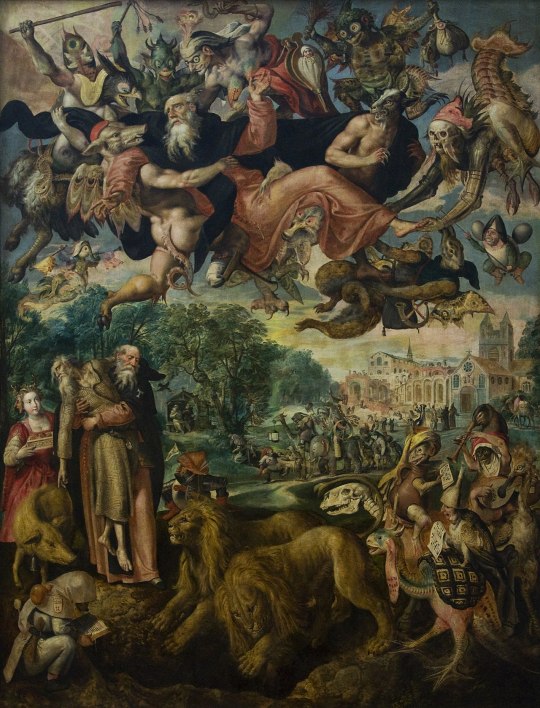
'Las Tentaciones de San Antonio', Marten de Vos.
#paint#painting#arte#art#pintura#cuadro#marten de vos#amberes#las Tentaciones de San Antonio#san antonio#tentaciones
0 notes
Photo

Wenzel Coebergher - Preparations for the martyrdom of St Sebastian - 1599
oil on canvas, height: 288.5 cm (113.5 in); width: 207.5 cm (81.6 in)
Museum of Fine Arts of Nancy, France
Wenceslas Cobergher (1560 – 23 November 1634), sometimes called Wenzel Coebergher, was a Flemish Renaissance architect, engineer, painter, antiquarian, numismatist and economist. Faded somewhat into the background as a painter, he is chiefly remembered today as the man responsible for the draining of the Moëres on the Franco-Belgian border. He is also one of the fathers of the Flemish Baroque style of architecture in the Southern Netherlands.
Born in Antwerp, probably in 1560 (1557, according to one source), he was a natural child of Wenceslas Coeberger and Catharina Raems, which was attested by deed in May 1579. His name is also written as Wenceslaus, Wensel or Wenzel; his surname is sometimes recorded as Coberger, Cobergher, Coebergher, and Koeberger.
Before being known as an engineer, Cobergher began his career as a painter and an architect. In 1573 he started his studies in Antwerp as an apprentice to the painter Marten de Vos. Following the example of his master, Cobergher left for Italy in 1579, trying to fulfil the dream of every artist to study Italian art and culture. On his way there he stayed briefly in Paris, where he learned about his illegitimate birth from seeing the will of his deceased mother. He returned to Antwerp right away to settle some legal matters relating to this discovery. Later in the year, he set forth again to Italy. He settled in Naples in 1580 (as attested by a contract) and remained there till 1597.
In Naples he worked under contract for eight ducats together with the Flemish painter and art dealer Cornelis de Smet. He returned briefly to Antwerp in 1583, buying goods with borrowed money for his second trip to Italy. He is mentioned again in Naples in 1588. In 1591 he allied himself with another compatriot, the painter Jacob Franckaert the Elder (before 1551–1601).
He moved to Rome in 1597 (as attested in a letter to Peter Paul Rubens by Jacques Cools). During that time he had also been preparing a numismatic book in the tradition of Hendrik Goltzius. He must also have built up a reputation as an art connoisseur, since in 1598 he was asked to make an inventory and set a value on the paintings of the deceased cardinal Bonelli.
After the death of his first wife Michaela Cerf on 7 July 1599, he married again, four months later and at the age of forty; his second wife was Suzanna Franckaert, 15-year-old daughter of Jacob Franckaert the Elder, who was also active in Rome. He would have nine children with his second wife, while his first marriage had remained childless.
During his stay in Rome Cobergher became much interested in the study of Roman antiquities, antique architecture and statuary. He was also much interested in the way in which Romans represented their gods in paintings, bronze and marble statues, bas-reliefs and on antique coins. He gathered an important collection of coins and medals from the Roman emperors. These drawings and descriptions were gathered in a set of manuscripts, two of which survive (Brussels, Royal Library of Belgium). He was also preparing an anthology of the Roman Antiquity (according to the French humanist Nicolas-Claude Fabri de Peiresc) that was never published. Sometimes the "Tractatus de pictura antiqua" (published in Mantua, 1591) has been ascribed to Cobergher, but this was based on an erroneous reading of an 18th-century catalogue.
At the same time he was witness to the completion of the dome of St. Peter's Basilica in 1590. The architecture of several Roman churches made also a deep impression on him; among them most influential were the first truly baroque façade of the Church of the Gesù, Santa Maria in Transpontina and Santa Maria in Vallicella. He would use their design in his later constructions.
During his stay in Italy he painted, under the name "maestro Vincenzo", a number of altarpieces and other works for important churches in Naples and Rome. His style is somewhat mixed, incorporating Classical and Mannerist elements. His composition is rational and his rendering of the human anatomy is correct. A few of his altarpieces still survive: a Resurrection (San Domenico Maggiore, Naples), a Crucifixion (Santa Maria di Piedigrotta, Naples), a Birth of Christ (S Sebastiana) and a Holy Spirit (Santa Maria in Vallicella, Rome). One of his best known paintings is the Martyrdom of Saint Sebastian, originally in the Cathedral of Our Lady (Antwerp), but now in the Musée des Beaux-Arts in Nancy. This painting was commissioned by the De Jonge Handboog (archers guild) of Antwerp in 1598, while Cobergher was still in Rome. His Angels Supporting the Dead Lord, originally in the Sint-Antoniuskerk in Antwerp, can now also be found in the Musée des Beaux-Arts in Nancy, while his Ecce Homo is now in the museum of Toulouse.
Cobergher died in Brussels on 23 November 1634, leaving his family in deep financial trouble. His properties in Les Moëres had to be sold, as well as his house in Brussels. Even his extensive art and coin collection was auctioned off for 10,000 guilders.
59 notes
·
View notes
Text

"Christ Triumphant Over Death" - Mitigat Accensam Divini Numinis Iram Post Varios esu Casus de Morte Resurges, Marten de Vos (1532 – 4 December 1603), Flemish
3 notes
·
View notes
Photo
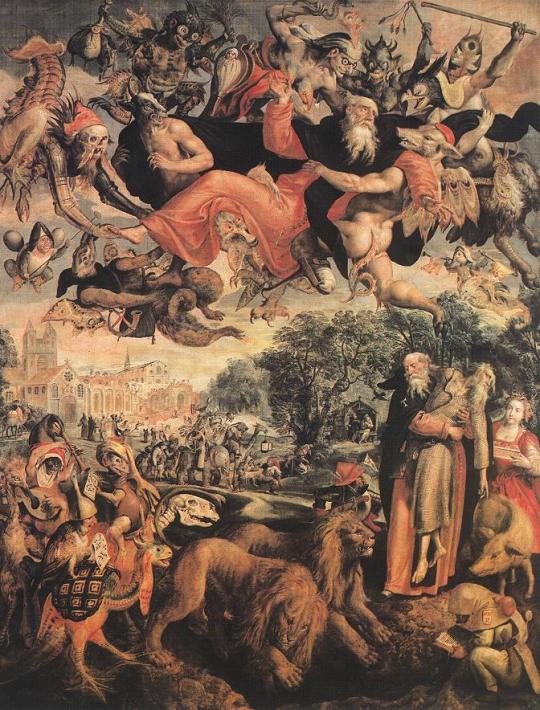
Marten de Vos
The Temptation of St Antony
1591-94
Oil on panel, 280 x 212 cm
Koninklijk Museum voor Schone Kunsten, Antwerp
67 notes
·
View notes
Photo
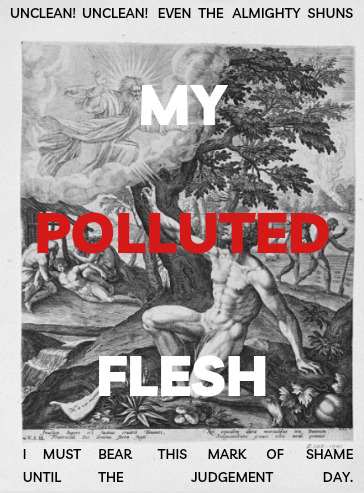
Inspired by THIS post.
Dracula, Chapter 22 // God appearing to Cain..., Marten de Vos
51 notes
·
View notes
Text
El verano sin sol
Cuando envié esto acababa de terminar una vuelta alrededor del sol. Es un viaje que no siempre me gusta, porque no me creo avanzar, porque físicamente sigo en el mismo sitio, duermo en la misma cama, veo a la misma gente. Culpé a la necesidad constante que tengo de no echar ancla en ninguna parte, de hacer siempre cosas nuevas, cuando en realidad suelto el ancla con mucha facilidad y el arraigo forma parte de mi identidad. Brindé por las cosas que dejé y que algún día volverán, y ahora un año después observo que jamás se fueron. Voy a recopilar, actualizar y responder aquí las cartas que escribí durante ese verano donde decidí (otra vez) poner al revés mi vida.
Cupido y las estrellas
Ese verano el telescopio James Webb mostró la imagen infrarroja más profunda y nítida del universo jamás vista. Somos tan pequeñitos… Esto es muy emocionante. Todo es luz. Este año el cielo a mostrado un “❓” en medio de las galaxias. Yo también me lo pregunto.


Durante el mismo mes conocí la obra de Anton Raphael Mengs y esta alegoría de la tarde, del grupo «los quattro crepuscoli», que tiene todas las cosas que me gustan y que ahora un año después está expuesto por primera vez en la Galería de Colecciones reales y lo puedo ir a visitar.
Durante aquellos días de calor y café con hielo llegué a dos conclusiones:
Sobre el miedo a equivocarse. Equivocarse en realidad significa aprender cosas. Es un poco el mantra que utilizo cuando me da miedo hacer algo (de verdad, suele darme mucho miedo hacer cosas, y siempre me repito que si no me sale al menos habré aprendido).
Nada es tan importante. Cuando entendí las cosas positivas de equivocarse (y no digo “cuando perdí el miedo a equivocarme” porque es normal tener siempre un poquito de miedo) aprendí también a relativizar las cosas. Casi nada termina siendo nunca tan malo como esperamos, aunque el miedo sea algo real y casi tangible cuando lo estás sintiendo. Pero todo pasa, todo se termina. Percibir mi propia vida a gran escala provocó que de golpe dejasen de preocuparme muchas cosas. Pensé en etapas, en ciclos. Todo lo que me sucede hoy también se pasará.
Pero el verano sin sol se convirtió en el verano sin nombre, y escribí
En esta casa pequeña quiero correr hasta el final del pasillo,
en la pista de gravilla quiero correr hasta arañarme las rodillas,
quiero recuperar
las tardes tranquilas del verano.

El verano es la estación que me vio nacer, la que me recuerda a tantos momentos felices. Siempre que necesito volver a encontrarme en algún lugar ese sitio es el verano, a orillas del mediterráneo. Mi hogar lleno de luz, noches frescas y plenitud. El sitio que me recuerda las cosas que son importantes. Ese verano le di un poco la espalda, y la tristeza encontró grietas por las que colarse. Intenté irme a bancos extranjeros con un libro y un helado, pero no funcionó. La solución siempre es y será ir a respirar sol y playa (respirar de verdad, lejos de la ciudad). Para próximos veranos, me propongo añadir además fuegos artificiales.
Parte 2. De las letras y las artes 💌
Hace un par de años abrí una cuenta en instagram para intentar motivarme a estudiar de nuevo. Ese año fue un poco caótico, así que no mantuve nada durante demasiado tiempo. Hace unos meses retomé esa cuenta (que es la de mochabunin), y durante el mes que tardé en tomar la decisión de opositar a museos la estuve vaciando un poco para volver a llenarla. Cuando fuí a editar el texto de la biografía no sabía muy bien qué poner. En estos años he ido descolgándome de algunas etiquetas, y ahora que me (nos) percibo como algo muy complejo y lleno de matices nunca sé muy bien cómo definirme.
Al final escribí «de las letras y las artes» porque creo que eso puede empezar a ser un resumen y en realidad no tengo por qué elegir.
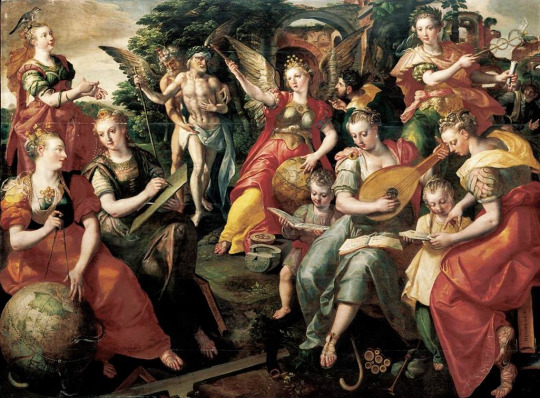
Allegory of the Seven Liberal Arts — Marten de Vos
Sobre poemas y símbolos
Leia en aquel verano un poema, uno bastante largo y con capítulos, no sé si así se sigue llamando poema porque yo la verdad entiendo muy poco de poesía. Pero tengo antologías en casa y a veces me gusta regresar a ellas, por si descubro algo nuevo.
Cuando iba al instituto escuché recitar un poema, y no le estaba haciendo mucho hasta que de repente sí porque se me atravesó como una flecha. Conseguí el libro donde se incluía ese poema. Y todavía no he conseguido aprender a leer poesía, pero aprendí a reconocer cuándo un símbolo, una imagen o una sensación me decían "Espérate aquí, esto es importante".
Lei a Ernst Cassirer (no es un poeta, es un filósofo y sociólogo) y decía que el ser humano, al contrario que el ser racional que proponía Aristóteles, es una criatura de símbolos. Buscamos símbolos, convertimos las cosas en símbolos buscando hacerlas asumibles. Convertir algo en un símbolo universal puede ser una idea peligrosa (no voy a hablar hoy del amor por más que venga a cuento) pero al final, la esencialidad es un poco así: apropiarte de un símbolo, reconocerte en él y dar sentidos con ello a tu identidad.

La muerte de Casagemas (1901) — Imagina que te importe tanto tu amigo como para estructurar uno de tus periodos artísticos en torno a su suicidio. Y tomar una composición del Greco para ello.
Retomando mis lecturas poéticas, el poema largo que leí es Altazor o El Viaje en Paracaídas. Un poema donde aparece la Virgen en medio del espacio, donde el tejido del arcoíris son lágrimas y caen cometas. Un universos de símbolos en un poema.
Cuando la persona de la que me enamoré leyó ese poema lo convertí, un poco, en un símbolo de mí. Decir "de nuestra relación" por mucho que ese poema nos vinculase, me parece inacertado, porque sólo tuvo importancia para mí y ese es un requisito para la construcción de un símbolo; que te importe muchísimo.
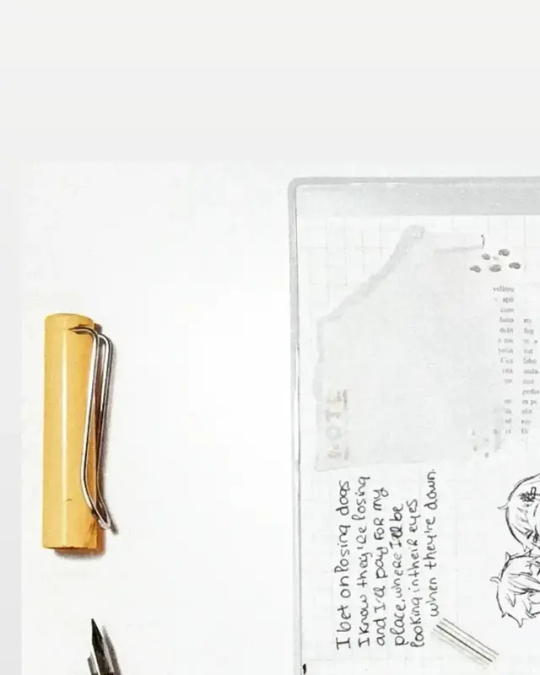
Cuando pienso mi vida en retrospectiva, establezco la división según la persona que fui en ese momento. O en base a un evento trascendental, si lo hubo, de esos que modifican tanto tu personalidad como para que no sepas muy bien quién eras en ese momento. En base a las cosas, independientemente de que fuesen buenas o malas, que te importaban muchísimo en ese momento. Tuve el año del volcán, y ahora vivo entre maremotos bajo el mar tranquilo.
Decía Juan Ramón Jimenéz que la poesía es un intento de aproximación a lo absoluto por medio de los símbolos.
Esto es todo por mi parte. Te dejo pensando.
☕ Si te apetece, puedes apoyarme con un café.
💌 Puedes recibir la newsletter en tu mail.
1 note
·
View note
Text
Revivez la passion du style : les tendances de la mode des années 90 reviennent en force

On dit que la mode est un éternel recommencement. C'est tellement vrai! Prenez un instant pour voyager dans le temps, vers une décennie où les jeans taille haute et les vestes en jean étaient rois. Oui, vous l'avez deviné, nous parlons de la mode des années 90 qui refait surface avec un élan fulgurant.
Des vestes en jean à la taille haute : la mode féminine des années 90
Soyez prêtes à accueillir à nouveau la veste en jean dans votre garde-robe. Ce classique des années 90 est de retour, apportant avec lui cette touche décontractée et chic qui définit si bien la mode féminine de cette époque. Associez-le à une jupe taille haute pour un look rétro et moderne à la fois.
Le retour des jeans taille haute
Les jeans taille haute sont l'incarnation même de la mode des années 90. Ils sont non seulement confortables, mais offrent également une silhouette flatteuse. Portez-les avec un crop top pour un look digne des meilleures tendances des années 90.
A lire également : Adoptez un look amincissant : nos astuces pour sublimer votre silhouette
Revivez le charme des jupes plissées
Les jupes plissées font aussi leur retour. Légères et aériennes, elles sont parfaites pour ajouter une touche de féminité à votre style. Associez-les à un t-shirt graphique pour un contraste audacieux et élégant.
Les chouchous : un accessoire incontournable de la mode féminine
Souvenez-vous des chouchous, ces accessoires de cheveux qui étaient omniprésents dans les années 90. Ils sont de retour, prêts à donner une touche nostalgique à vos coiffures. Disponibles dans une variété de tissus et de couleurs, les chouchous sont un moyen facile d'intégrer la mode des années 90 dans votre look quotidien.
Découvrez la magie des chokers
Les chokers, ces colliers serrés qui ornent le cou, sont une autre tendance de la mode des années 90 qui revient en force. Ils ajoutent une touche de mystère et de séduction à n'importe quelle tenue. Choisissez un choker en velours pour un look nostalgique, ou optez pour un design plus moderne pour une touche contemporaine.
Les Doc Martens : l'empreinte audacieuse des années 90
Vous souvenez-vous de la sensation de porter des Doc Martens pour la première fois ? Ces bottes emblématiques sont de retour, ajoutant une touche de rebellion à la mode féminine. Que vous optiez pour le modèle classique noir ou que vous osiez une couleur plus audacieuse, les Doc Martens sont la cerise sur le gâteau d'un look inspiré des années 90.
Alors voilà, le grand retour des tendances de la mode des années 90 est là, et nous sommes ravis de le voir. Que vous soyez une nostalgique de cette décennie ou simplement une amoureuse de la mode, il y a une place pour vous dans ce voyage stylistique. Êtes-vous prête à revivre ces tendances ? Racontez-nous votre tendance préférée des années 90.
Read the full article
0 notes
Photo
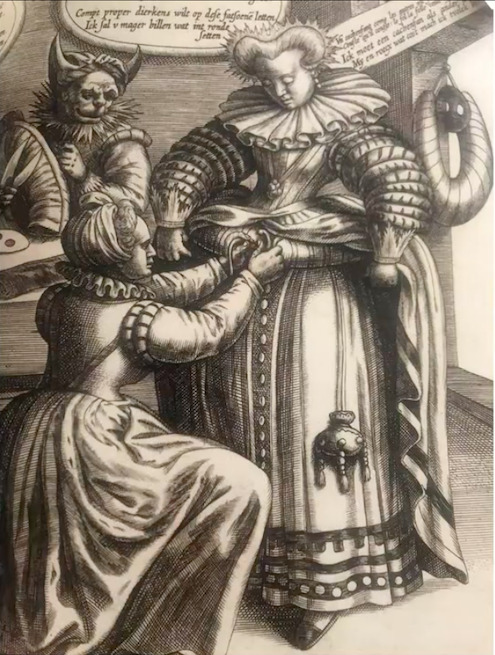
“La Vanité des Femmes" estampe attribuée à Marten de Vos (circa 1600) présentée à la conférence “S'Habiller à la Renaissance” par Marine Chaleroux - Historienne d'Art - de l'association Des Mots et Des Arts, avril 2023.
0 notes
Photo
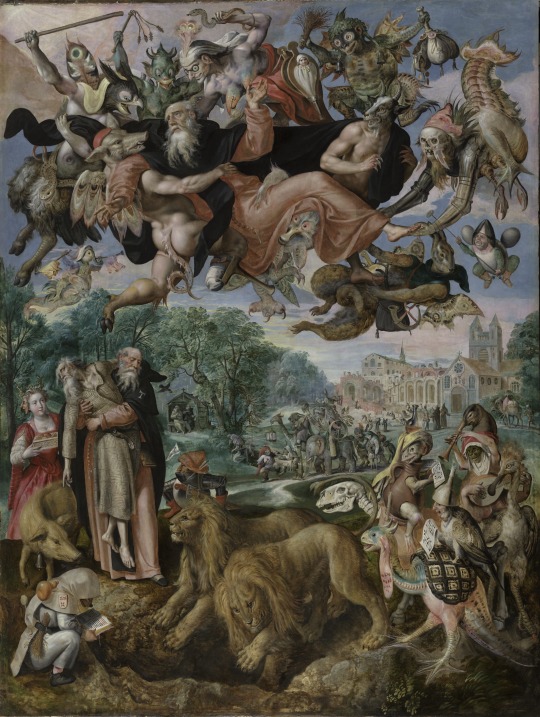
Maerten de Vos - The Temptations of Antony Abbot of Egypt (1591-94), Koninklijk Museum voor Schone Kunsten, Antwerp
Photographed by Rik Klein Gotink
27 notes
·
View notes
Text

Artists included: Ángel Zárraga, Marten de Vos, Artus Wolfaerts, Jacopo Zanguidi, Jacob de Backer, Gerrit van Honthorst, Francesco Guarino da Solofra, Francesco Guarino, The Master of the Parrot, Antwerp School, Manuel Lopez Vazquez, Anton Kern, Pere Lembrí, Valencian School, Caravaggio, Anton Raphael Mengs, School of Toledo, Spanish School, Pedro Orrente, Francisco Camilo, Bolognese School, Northern follower of Leonardo da Vinci, Ferrarese School, Jacopo Bassano, Marco Palmezzano, Marco Palmezzano, Orazio Lomi Gentileschi, Giovanni Battista Piazzetta, Jacques Stella, Artemisia Gentileschi, Daniele Crespi, Onorio Marinari, Gregorio Lazzarini, Francesco de Mura, Francisco Camilo, Sir Peter Paul Rubens, Theodoor Rombouts, Jacques d'Arthois…
Please follow link for full post
Francesco Guarino da Solofra,Artus Wolfaerts,Jacob de Backer,Gerrit van Honthorst,Jacopo Zanguidi,Marten de Vos,RELIGIOUSART, Zaidan, Mythology, Religion, biography, Paintings, Art, History, Ancient, footnotes,
66 Paintings - RELIGIOUS ART BY THE OLD MASTER PAINTERS - Paintings from the Bible, with footnotes
#Icon#Bible#biography#History#Jesus#mythology#Paintings#religionart#Saints#Zaidan#footnote#fineart#Calvary#Christ
0 notes
Photo
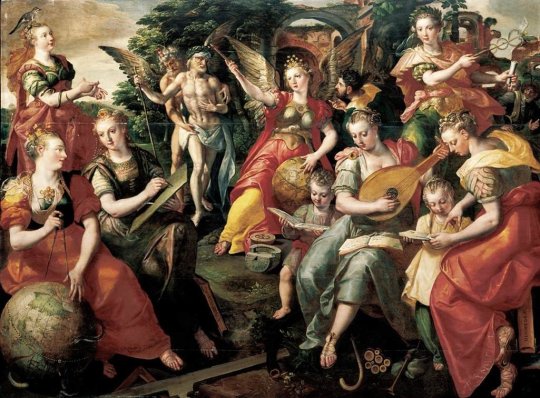


“Allegory Of The Seven Liberal Arts”, 1590, by Maerten de Vos, Maerten de Vos the Elder or Marten de Vos (Flemish painter. He is known mainly for his history and allegorical paintings and portraits. He was, together with the brothers Ambrosius Francken I and Frans Francken I, one of the leading history painters in the Spanish Netherlands after Frans Floris career slumped in the second half of the sixteenth century as a result of the Iconoclastic fury of the Beeldenstorm.De Vos was a prolific draughtsman and produced numerous designs for the Antwerp printers. These were circulated widely in Europe and the Spanish colonies and contributed to his international reputation and influence. His designs were also used as models for tapestries and stained glass windows; 1532 – 4 December 1603).
1 note
·
View note
Photo
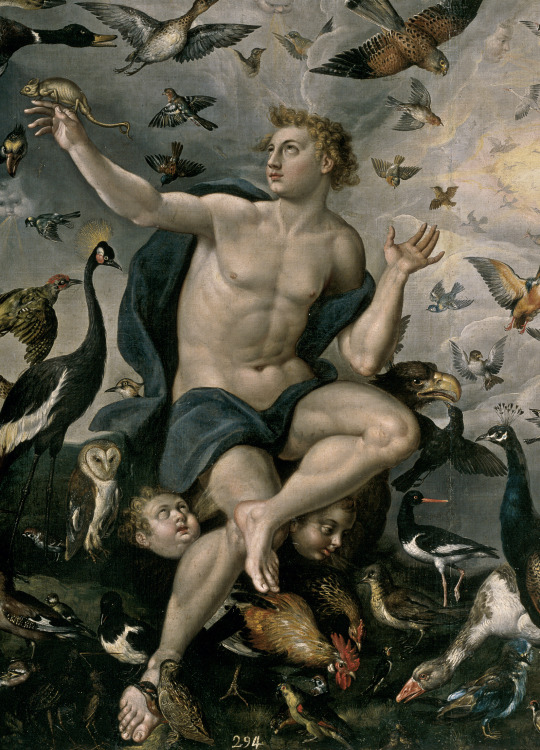
Marten de Vos (1532 – 1603)
The air.
753 notes
·
View notes